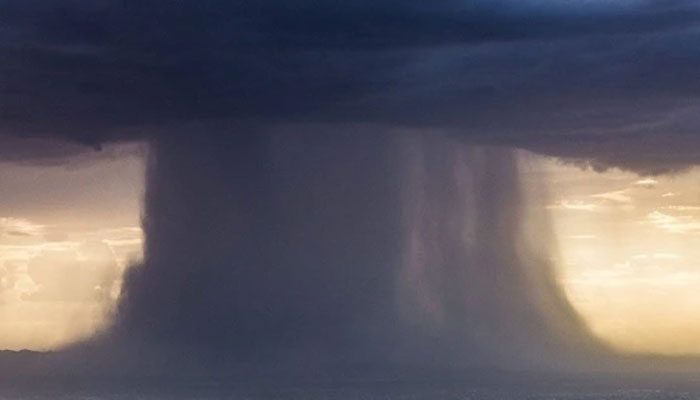Understanding Cloudbursts: A Dangerous Weather Phenomenon with Devastating Impact
Pakistan has witnessed extreme rain events attributed to cloudbursts.
ISLAMABAD – Cloudbursts, a sudden and extreme weather event, occur when upward air currents during rainfall prevent raindrops from reaching the ground, causing water to accumulate in large quantities at higher altitudes. Once the air pressure drops, this stored water falls abruptly like a waterfall, leading to intense and often destructive rainfall in a very short span.
According to meteorologists, there are various definitions of a cloudburst. For example, Sweden’s Meteorological Department defines a cloudburst as 50 mm of rainfall per hour, while other sources classify it as 100 mm of rain in one hour.
A recent study highlights that cloudbursts are among the most dangerous natural phenomena, often resulting in sudden flash floods, posing a serious threat to life and property on a large scale.
The Pakistan Meteorological Department has also recognized the severity of such events and noted that they are difficult to predict with precision due to their abrupt nature.
Historically, Pakistan has witnessed extreme rain events attributed to cloudbursts. Twenty years ago, Islamabad recorded 620 mm of rainfall in just 12 hours, a striking example of the phenomenon’s impact.
On a global scale, the highest recorded rainfall in one hour occurred in Ladakh, India, in 2010, where 250 mm of rain fell in just one hour due to a cloudburst.
The record for most rainfall in 24 hours was set on Réunion Island, a French territory in the Indian Ocean, where 1,870 mm of rain was recorded in a single day.
Read more: Trump, Putin leave Alaska moot without Ukraine Deal after high-stakes showdown
Experts continue to emphasize the need for improved forecasting systems and public awareness to mitigate the risks associated with cloudbursts, especially in vulnerable mountainous and urban regions.






Comments are closed, but trackbacks and pingbacks are open.